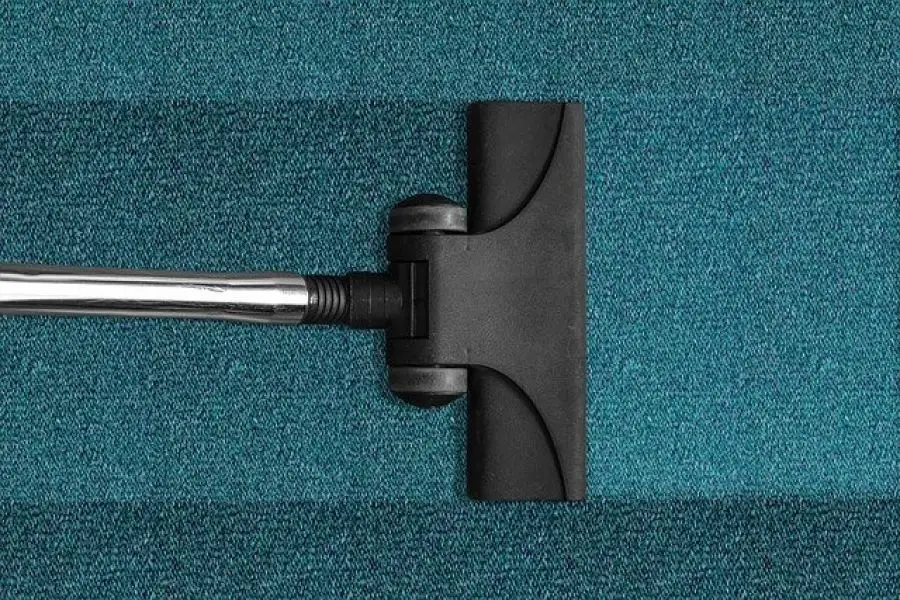There are a few easy solutions for fixing carpet that is coming up at the edges or seams. The most common causes are improper installation, loose tack strips or padding, or simply heavy foot traffic over time which can loosen the carpet fibers along the edges. Fixing this issue properly will make sure your carpet lays flat and looks neat along the baseboards or transition areas.
Page Contents
Quick Solutions
For minor edge lifting, here are some quick DIY solutions you can try:
- Use a carpet seam iron to heat and flatten the lifted edges back into place. Apply weight by placing books or other heavy objects on top as it cools.
- Apply carpet seam tape or double-sided carpet tape under the lifted edges. The adhesive will help adhere it back down.
- For loose seams, inject a small amount of liquid seam glue then weigh it down as it dries.
- For wall-to-wall carpet, hammer any protruding tacks back down into the tack strips if possible.
- Add additional tack strips along edges that are coming up.
These quick fixes may temporarily keep your carpet flat and secure. However, they are not guaranteed long-term solutions for heavily lifted or warped edges.
Professional Repairs
For more stubborn carpet edge lifting issues, or if you want a more permanent fix, professional carpet repair is recommended. Here are the common methods professionals use:
- Re-stretch the carpet. Over time, carpet can loosen and stretch from use. A professional carpet stretcher tool pulls and re-secures the carpet fibers evenly across the floor and re-attaches it tightly to each tack strip.
- Re-secure seams. Seam adhesive can weaken and dry out over years of use. A pro can re-activate the adhesive or apply fresh glue underneath to bond the seam edges again.
- Replace tack strips. Old tack strips can pop up or break over time. A pro can remove them and install new tack strip anchors around the perimeter before re-stretching the carpet.
- Add naildown trim. For carpets where stretching isn’t working, nailing decorative trim along the edges can secure lifted sections.
- Patch new carpet. In severe cases where carpet backing and fibers are damaged, it may require patching in new carpet sections along areas that cannot be repaired.
Professional carpet stretching or repair costs between $200-$500 on average depending on the room size and extent of lifting damage. DIY repairs can lead to uneven results or gradual re-lifting, so a qualified carpet cleaner is recommended for best results.
Causes of Carpet Lifting at Edges
To help prevent carpet lifting issues, it helps to understand the common causes:
- Improper installation – Seams not glued properly or carpet not stretched tight enough during the original install can allow edges to eventually lift.
- Excessive humidity/moisture – Moisture from spills, pets, leaks, etc. can loosen carpet backings and cause lifting or mildew, especially around perimeter edges.
- Weak adhesive – Older glues can dry out over time causing the carpet seams or edges secured with adhesive to loosen and lift.
- Heavy furniture dragging – Dragging furniture across carpet without protection can catch and rip up carpet edges.
- Foot traffic near edges – Repeated foot impact next to baseboards or thresholds can gradually loosen and lift carpet edges.
Regular carpet cleaning, adds moisture barriers, carpet protectors under furniture, and re-stretching can all help minimize lifting issues long-term.
Preventing Further Carpet Lifting
Once you have fixed any lifted edges, here are some good tips to help prevent it from reoccurring:
- Use furniture glides or casters under heavy furniture legs.
- Limit high-traffic areas next to fixed edges or thresholds.
- Clean spills quickly to limit moisture damage.
- Have carpets professionally cleaned every 12-18 months.
- Consider tackless carpet trim edges instead of traditional tack strips.
- Re-stretch wall-to-wall carpets every 2-3 years for high-traffic areas.
- Install peel-and-stick carpet tape around perimeter edges for added hold down.
When to Call a Professional
Here are some signs that indicate it’s time to call a professional carpet repair company:
- Carpet lifting more than 1-2 inches from the tack strips or walls.
- Seams are coming apart and cannot be re-secured with seam tape.
- Visible damage like ripples, bubbles, or carpet backing separation.
- Musty carpet odor indicating moisture buildup.
- Multiple lifted edges throughout a room or along major high-traffic seam lines.
- Tack strips or nails are coming loose from the sub-floor.
- Heavy furniture is catching or pulling up the carpet surface.
DIY solutions can often temporarily fix minor edge lifting. But for any significant lifted areas, warped seams, or recurring issues – call a professional carpet installation company to properly re-stretch, repair edges, or replace damaged sections.
Conclusion
Lifting carpet edges are a common issue caused by improper installation, excessive moisture, furniture damage, or high foot traffic near edges over time. There are several quick home remedies like gluing or weighting edges to temporarily adhere them back down. However, for the best long-term results, professional carpet re-stretching or repair is recommended. Catching and fixing lifted edges quickly can prevent further damage and avoid the need for expensive carpet replacement.
